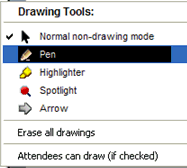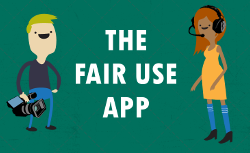Are you willing to use your professional brand to put a face on your business? The new DirectAds service from LinkedIn allows you to do just that. If you are looking to find the best way to communicate effectively to a selected, targeted and trusted audience, the new advertising approach introduced by the social network for the "pros" may be worth a deeper look.
 The new LinkedIn DirectAds
The new LinkedIn DirectAds service allows you to address in a very targeted way, professionals and other work contacts with highly targeted ads that you create yourself.
The LinkedIn professional network community is made up of senior executives, salespeople, and industry experts in just about any market industry, counting over 20 million professionals with an average household income: $109,000.
The cost is relatively lowas you can get started with as little as $25 and move up from there.
Business content analyst
John Blossom, provides an excellent intro and overview of this new direct advertising approach utilized by LinkedIn while dissecting its key strengths and future opportunities.
He writes:
"Executives are a conservative bunch when it comes to dealing with their personal reputations, but LinkedIn has proved to more than 20 million professionals so far that it is by and large a very trustworthy environment.
With that trust as a primary asset, it's likely that LinkedIn has set the stage for some solid revenue development that is likely to upend a few B2B applecarts in the long run.
For the time being, though LinkedIn is just at the begininning of what promises to be a long battle for the rights to what professionals value most in carrying out their business - trusted relationships that can yield revenues."
Here the full story:
The Payoff: LinkedIn Focuses on Monetization through Ads and Targeted Research
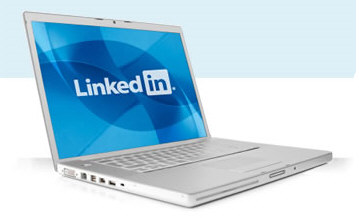 by John Blossom
LinkedIn's growing success
by John Blossom
LinkedIn's growing success is both admired and feared by many in the content business, but the rap against them for quite some time has been, "
Well, yeah, but where's the monetization?"
In truth, LinkedIn has been growing revenues steadily through traditional brand ads, partnerships and payments for premium services.
But with two key moves LinkedIn is raising the bar on its prospects for revenues - and for a potential exit at a more appreciable price.
DirectAds
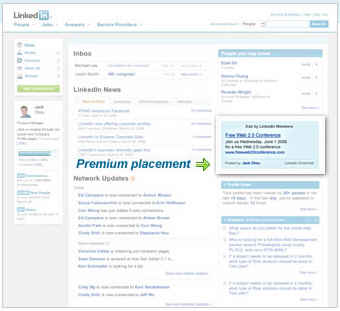 The fist LinkedIn initative is
The fist LinkedIn initative is its new
DirectAds service, which enables LinkedIn members with profiles to produce simple text ads on a self-service basis that can appear in other members' profile pages.
Similar in overall concept to Facebook's SocialAds program - a link to the advertiser's profile appears in each ad to ensure that marketing is on a conversational basis with a known entitiy - DirectAds has the added benefit of being able to target executive peers in the LinkedIn network with a great deal of granularity - and charges healthy but affordable minimum rates to do so - a $25 minimum for a flight of ads, with impressions based on a variable formula.
Filtering options include many of the criteria found in a typical member's profile, including the ability to limit ads to specific geographic regions.
DirectAds Potential
 The potential for
The potential for DirectAds is very strong within LinkedIn itself, but it also has the potential to provide B2B publishers with some real concerns as this evolves. Though there is no announced plan to take DirectAds off-site into other publishing venues, certainly classifieds in B2B journals and Web sites could be easily targeted by LinkedIn with its extensive network of top-shelf executives and salespeople.
More importantly, it's not too hard to imagine that a B2B publisher seeking revenues from companies trying to get a message through to very specific executives would jump at the chance to use DirectAds to get rates far higher than classifieds for its very targeted profiling capabilities.
In very tightly knit B2B communities DirectAds would play very well in B2B publishing venues.
Technologically, it would not be hard to implement at all - it would only take enabling a B2B publishing site with Google's OpenSocial API.
With such a combination DirectAds would have a Google AdWords/AdSense revenue combo for on-site/off-site revenues that could be impressive indeed.
If done properly - hopefully avoiding Facebook's pratfall with its Beacon program that released private data in a user-unfriendly manner - this has the potential to be to B2B publishing what Google was to consumer publishing, turning advertising into relationship building with one click of the mouse.
With its potential for ultra-precise targeting, it could put somewhat of a dent in marketing lists services as well in time.
The LinkedIn Research Network
 The other interesting new program
The other interesting new program at LinkedIn is the
LinkedIn Research Network, which leverages some of the concepts that it employed in
LinkedIn Answers to provide a tool that can enable executives to conduct peer-to-peer industry research.
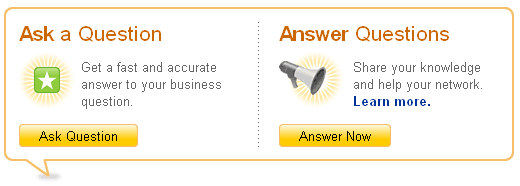
As in LinkedIn Answers members of LinkedIn can pose questions to peers in the LinkedIn network, using LinkedIn's extensive structured and unstructured member profile data to zero in on just the right people to target for questions.
The Research Network provides its users with a workbench to monitor responses to questions and to in effect build research panel who can be contacted for additional questions.
The revenue hook in Linked in Research Network is its use of LinkedIn's private InMail network to contact members. Members may use InMail for contacting up to 20 people at a time, presumably to cut down on "
spam" research requests and presumably to make it easier to meter the pricing to a reasonable block of minimum requests.
Of course, one can sign up for InMail at any number of premium levels, so the real hook is to promote InMail premium subscription revenues as much as possible. Given that the demo video was intent on saying that this product was targeted primarily at financial industry analysts trying to contact experts in companies and market sectors, perhaps their initial expectations for its use are limited. But clearly its ability to combine the art of research into the art of marketing will make this a popular option for many over time.
Future Outlook
 With both of these options
With both of these options LinkedIn is taking a relatively low-key approach to product development, moving relatively slowly to ensure that their most valuable asset - the trust and security that the LinkedIn system of opt-in relationships has protected through its development - will not be tainted or abused.
Executives are a conservative bunch when it comes to dealing with their personal reputations, but LinkedIn has proved to more than 20 million professionals so far that it is by and large a very trustworthy environment.
With that trust as a primary asset, it's likely that LinkedIn has set the stage for some solid revenue development that is likely to upend a few B2B applecarts in the long run.
For the time being, though
LinkedIn is just at the beginning of what promises to be a long battle for the rights to what professionals value most in carrying out their business - trusted relationships that can yield revenues.
N.B.:
DirectAds is currently available to only a limited set of LinkedIn members, but we plan on opening up to more advertisers soon.
 Originally written by John Blossom for Shore and first published on June 30 2008 as "The Payoff: LinkedIn Focuses on Monetization through Ads and Targeted Research"
Originally written by John Blossom for Shore and first published on June 30 2008 as "The Payoff: LinkedIn Focuses on Monetization through Ads and Targeted Research"


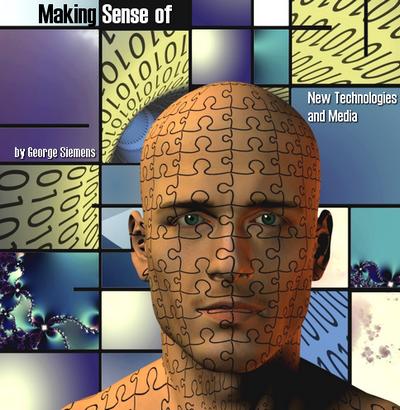
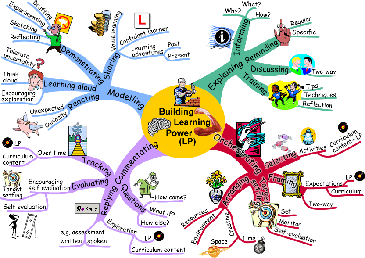
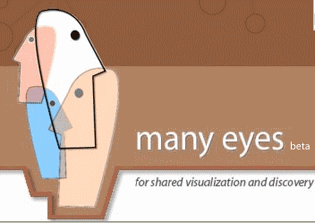 I love
I love  Open environments - or at minimum, environments where everyone potentially has a voice - function by different rules than closed environments. We've seen this in fields such as news, video, music, and journalism. We're also seeing it in the marketing and public relations fields. The fully pre-packed, centralized, company-shaped public image is now augmented by images posted to flickr and videos posted on YouTube.
An organization no longer solely shapes its reputation. The myriad of bloggers, podcasters, youtubers, facebookers, and twitterers contribute significantly to reputation of a company. William Dutton calls this networked group
Open environments - or at minimum, environments where everyone potentially has a voice - function by different rules than closed environments. We've seen this in fields such as news, video, music, and journalism. We're also seeing it in the marketing and public relations fields. The fully pre-packed, centralized, company-shaped public image is now augmented by images posted to flickr and videos posted on YouTube.
An organization no longer solely shapes its reputation. The myriad of bloggers, podcasters, youtubers, facebookers, and twitterers contribute significantly to reputation of a company. William Dutton calls this networked group 
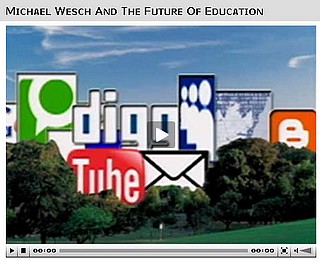


 The new
The new  by John Blossom
by John Blossom
 The fist LinkedIn initative is its new
The fist LinkedIn initative is its new  The potential for DirectAds is very strong within LinkedIn itself, but it also has the potential to provide B2B publishers with some real concerns as this evolves. Though there is no announced plan to take DirectAds off-site into other publishing venues, certainly classifieds in B2B journals and Web sites could be easily targeted by LinkedIn with its extensive network of top-shelf executives and salespeople.
More importantly, it's not too hard to imagine that a B2B publisher seeking revenues from companies trying to get a message through to very specific executives would jump at the chance to use DirectAds to get rates far higher than classifieds for its very targeted profiling capabilities.
In very tightly knit B2B communities DirectAds would play very well in B2B publishing venues.
Technologically, it would not be hard to implement at all - it would only take enabling a B2B publishing site with Google's OpenSocial API.
With such a combination DirectAds would have a Google AdWords/AdSense revenue combo for on-site/off-site revenues that could be impressive indeed.
If done properly - hopefully avoiding Facebook's pratfall with its Beacon program that released private data in a user-unfriendly manner - this has the potential to be to B2B publishing what Google was to consumer publishing, turning advertising into relationship building with one click of the mouse.
With its potential for ultra-precise targeting, it could put somewhat of a dent in marketing lists services as well in time.
The potential for DirectAds is very strong within LinkedIn itself, but it also has the potential to provide B2B publishers with some real concerns as this evolves. Though there is no announced plan to take DirectAds off-site into other publishing venues, certainly classifieds in B2B journals and Web sites could be easily targeted by LinkedIn with its extensive network of top-shelf executives and salespeople.
More importantly, it's not too hard to imagine that a B2B publisher seeking revenues from companies trying to get a message through to very specific executives would jump at the chance to use DirectAds to get rates far higher than classifieds for its very targeted profiling capabilities.
In very tightly knit B2B communities DirectAds would play very well in B2B publishing venues.
Technologically, it would not be hard to implement at all - it would only take enabling a B2B publishing site with Google's OpenSocial API.
With such a combination DirectAds would have a Google AdWords/AdSense revenue combo for on-site/off-site revenues that could be impressive indeed.
If done properly - hopefully avoiding Facebook's pratfall with its Beacon program that released private data in a user-unfriendly manner - this has the potential to be to B2B publishing what Google was to consumer publishing, turning advertising into relationship building with one click of the mouse.
With its potential for ultra-precise targeting, it could put somewhat of a dent in marketing lists services as well in time.
 The other interesting new program at LinkedIn is the
The other interesting new program at LinkedIn is the  As in LinkedIn Answers members of LinkedIn can pose questions to peers in the LinkedIn network, using LinkedIn's extensive structured and unstructured member profile data to zero in on just the right people to target for questions.
The Research Network provides its users with a workbench to monitor responses to questions and to in effect build research panel who can be contacted for additional questions.
The revenue hook in Linked in Research Network is its use of LinkedIn's private InMail network to contact members. Members may use InMail for contacting up to 20 people at a time, presumably to cut down on "spam" research requests and presumably to make it easier to meter the pricing to a reasonable block of minimum requests.
Of course, one can sign up for InMail at any number of premium levels, so the real hook is to promote InMail premium subscription revenues as much as possible. Given that the demo video was intent on saying that this product was targeted primarily at financial industry analysts trying to contact experts in companies and market sectors, perhaps their initial expectations for its use are limited. But clearly its ability to combine the art of research into the art of marketing will make this a popular option for many over time.
As in LinkedIn Answers members of LinkedIn can pose questions to peers in the LinkedIn network, using LinkedIn's extensive structured and unstructured member profile data to zero in on just the right people to target for questions.
The Research Network provides its users with a workbench to monitor responses to questions and to in effect build research panel who can be contacted for additional questions.
The revenue hook in Linked in Research Network is its use of LinkedIn's private InMail network to contact members. Members may use InMail for contacting up to 20 people at a time, presumably to cut down on "spam" research requests and presumably to make it easier to meter the pricing to a reasonable block of minimum requests.
Of course, one can sign up for InMail at any number of premium levels, so the real hook is to promote InMail premium subscription revenues as much as possible. Given that the demo video was intent on saying that this product was targeted primarily at financial industry analysts trying to contact experts in companies and market sectors, perhaps their initial expectations for its use are limited. But clearly its ability to combine the art of research into the art of marketing will make this a popular option for many over time.
 With both of these options LinkedIn is taking a relatively low-key approach to product development, moving relatively slowly to ensure that their most valuable asset - the trust and security that the LinkedIn system of opt-in relationships has protected through its development - will not be tainted or abused.
Executives are a conservative bunch when it comes to dealing with their personal reputations, but LinkedIn has proved to more than 20 million professionals so far that it is by and large a very trustworthy environment.
With that trust as a primary asset, it's likely that LinkedIn has set the stage for some solid revenue development that is likely to upend a few B2B applecarts in the long run.
For the time being, though
With both of these options LinkedIn is taking a relatively low-key approach to product development, moving relatively slowly to ensure that their most valuable asset - the trust and security that the LinkedIn system of opt-in relationships has protected through its development - will not be tainted or abused.
Executives are a conservative bunch when it comes to dealing with their personal reputations, but LinkedIn has proved to more than 20 million professionals so far that it is by and large a very trustworthy environment.
With that trust as a primary asset, it's likely that LinkedIn has set the stage for some solid revenue development that is likely to upend a few B2B applecarts in the long run.
For the time being, though 
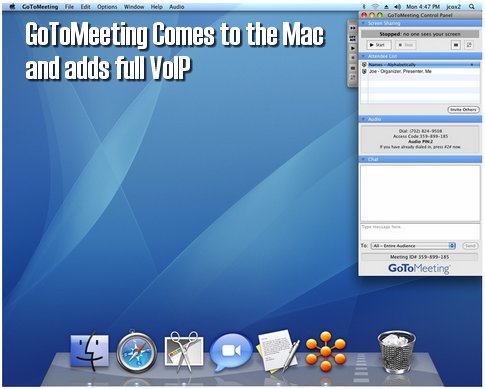 The new GoToMeeting release offers even more than one could have expected in this new version, which attempts to further streamline and simplify the already cool and slick interface while throwing in some heavy new features and improvements.
I think you will like what I have to show.
Here all the details:
The new GoToMeeting release offers even more than one could have expected in this new version, which attempts to further streamline and simplify the already cool and slick interface while throwing in some heavy new features and improvements.
I think you will like what I have to show.
Here all the details:
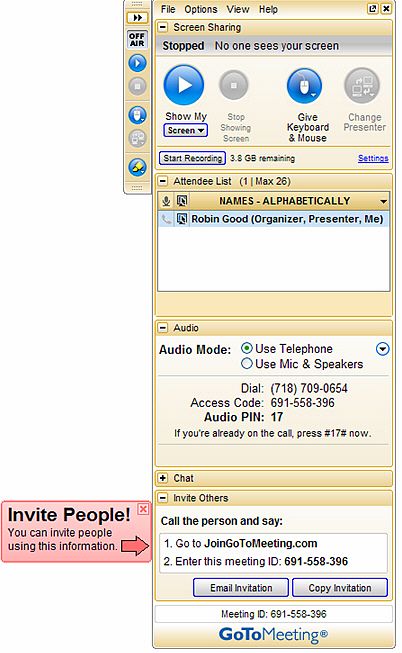

 The new GoToMeeting 4 is now 100% Mac-compatible, allowing Mac users to host a screen-sharing session or to receive presentation rights from a PC user. Not only. The new VoIP feature is also integrated in the Mac verson of GoToMeeting, allowing full voice over IP audio for both presenters and attendees also for them. The only major feature that hasn't made it yet to the Mac platform is the recording, but according to the Citrix GoToMeeting team this should see the light pretty soon in one of the upcoming minor upgrade releases.
The new GoToMeeting 4 is now 100% Mac-compatible, allowing Mac users to host a screen-sharing session or to receive presentation rights from a PC user. Not only. The new VoIP feature is also integrated in the Mac verson of GoToMeeting, allowing full voice over IP audio for both presenters and attendees also for them. The only major feature that hasn't made it yet to the Mac platform is the recording, but according to the Citrix GoToMeeting team this should see the light pretty soon in one of the upcoming minor upgrade releases.
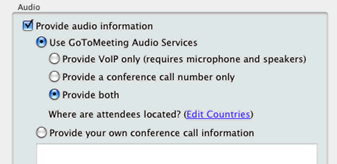 Probably too long-awaited to have the impact and the benefits that this was planned for, the addition of VoIP to GoToMeeting is probably the second most interesting feature in this new release. Being this the first release of the voice feature for Citrix, one cannot expect it to be perfect from day one. And in fact, if you have gotten yourself used to use Skype together with GoToMeeting (a perfect match) I do not think you are going to find the new integrated VoIP solution any better than the manual mashup you have used until now. The GoToMeeting VoIP facility works, but it is not as good, solid and reliable as what most everyone has come to expect from a VoIP call. Skype has long earned its crown in this area, and any competing effort will have to take very seriously into account that unless you offer something as good as or better than Skype, people will not bother using your newly added VoIP.
As a matter of fact in my own initial tests of GoToMeeting 4, I have had to give up on using the native G2M VoIP facility and switch back to Skype which offered much better audio quality and performance.
I would expect Citrix to refine and improve VoIP markedly in the coming weeks, but again my sensation is that this has been done too late and not with a killer solution. It is very difficult to switch user habits once they have settled on some tools that do efficiently what they need.
Probably too long-awaited to have the impact and the benefits that this was planned for, the addition of VoIP to GoToMeeting is probably the second most interesting feature in this new release. Being this the first release of the voice feature for Citrix, one cannot expect it to be perfect from day one. And in fact, if you have gotten yourself used to use Skype together with GoToMeeting (a perfect match) I do not think you are going to find the new integrated VoIP solution any better than the manual mashup you have used until now. The GoToMeeting VoIP facility works, but it is not as good, solid and reliable as what most everyone has come to expect from a VoIP call. Skype has long earned its crown in this area, and any competing effort will have to take very seriously into account that unless you offer something as good as or better than Skype, people will not bother using your newly added VoIP.
As a matter of fact in my own initial tests of GoToMeeting 4, I have had to give up on using the native G2M VoIP facility and switch back to Skype which offered much better audio quality and performance.
I would expect Citrix to refine and improve VoIP markedly in the coming weeks, but again my sensation is that this has been done too late and not with a killer solution. It is very difficult to switch user habits once they have settled on some tools that do efficiently what they need.
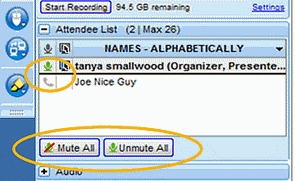 Much better attendee audio controls are now available making it possible for the host / presenter to easily identify among the attendees who is talking or making noise, and to as easily mute any or all attendees until desired.
Much better attendee audio controls are now available making it possible for the host / presenter to easily identify among the attendees who is talking or making noise, and to as easily mute any or all attendees until desired.
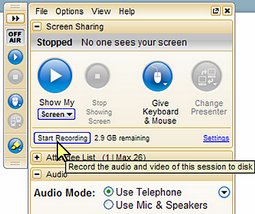 G2M v.4, integrates like its previous version a full recording facility which is capable of memorizing both the visual sessions as well as the audio from your presentation. Recordings can be rendered either in the native GoToMeeting format, which can be replayed back in a GoToMeeting session as well as in the standard Windows Media Video file format.
G2M v.4, integrates like its previous version a full recording facility which is capable of memorizing both the visual sessions as well as the audio from your presentation. Recordings can be rendered either in the native GoToMeeting format, which can be replayed back in a GoToMeeting session as well as in the standard Windows Media Video file format.
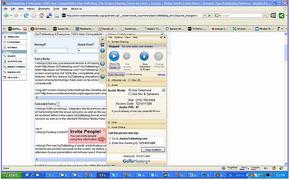
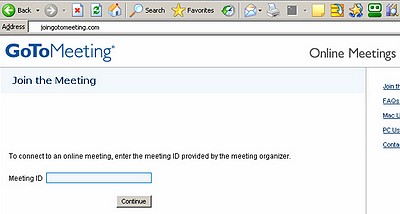 A new site service from Citrix makes it also easier to log in into any G2M-based presentation. Just communicate the meeting code and send your contact to
A new site service from Citrix makes it also easier to log in into any G2M-based presentation. Just communicate the meeting code and send your contact to 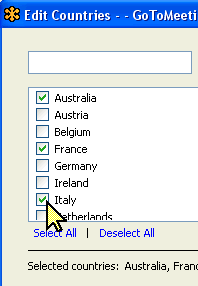 However amazing it may sound, if you choose to utilize the powerful international teleconferencing service integrated into the new GoToMeeting 4, you can now specify for which countries you want teleconferencing support and the G2M system will provide you with dedicated toll numbers in those very countries you have selected. The countries supported for now beyond the US are: Netherlands, France, Germany, Italy, Australia, Canada, Belgium, Ireland, New Zealand, Spain, Switzerland and the UK.
However amazing it may sound, if you choose to utilize the powerful international teleconferencing service integrated into the new GoToMeeting 4, you can now specify for which countries you want teleconferencing support and the G2M system will provide you with dedicated toll numbers in those very countries you have selected. The countries supported for now beyond the US are: Netherlands, France, Germany, Italy, Australia, Canada, Belgium, Ireland, New Zealand, Spain, Switzerland and the UK.
